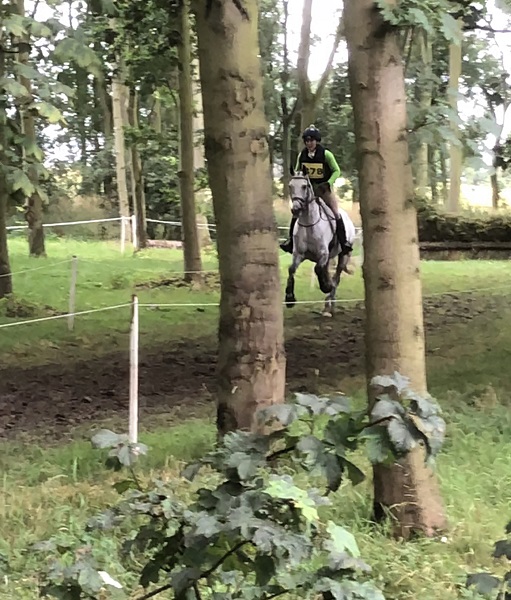Posted: 4th March 2020 | Back to news feed

To soft, too hard, how do you know when the ground conditions are good enough to compete and when you should save your horse for another day? Here event rider and trainer, Harriet Morris-Baumber, helps us understand the effects of riding on ground that could be considered detrimental to your horse.
The 2020 eventing season follows one of the wettest winters for many years and event organisers will be working hard to ensure ground conditions are as favourable as possible.
As the eventing season spans spring, summer and early autumn and the changing weather that these seasons can bring, ground conditions can vary tremendously.
So, how do we know when wet is too wet and hard ground is too hard, forcing a rider to make the difficult decision not to compete?
Whatever the ground conditions, the fitter a horse is and the better the condition of the muscles, the less likely an injury is to occur. As the muscles fatigue with work they lose the ability to contract and release as quickly, making it more difficult to instantly compensate for any loss of balance caused when they lose their footing.
It is also worth considering that horses can easily lose their confidence if the going doesn’t suit them.
On very wet, sloppy ground a horse can propel themselves through the mud, which can have an effect on their traction control system, but not necessarily cause an injury directly.
Wet, holding ground however has a sucking action with every stride and the horse has to work harder to pull their legs out of the ground with each stride. This repetitive action can cause strains to the soft tissues of the lower limbs and will fatigue the muscles quicker resulting in a reduced ability to balance, turn, and change pace.
Wet or deep ground, while being much kinder to the joints than hard ground can cause stress to the soft tissues.
One competition in muddy conditions in unlikely to result in an injury but if your horse has previously had tendon or ligament issues and or excessive speed is used the likelihood of an injury greatly increases. Continuing to push a tired horse to go faster, particularly in deep holding ground also massively increases the chances of an injury.
Another factor to take into account when considering the ground conditions is that the horse’s hoof is designed to slide very slightly as it hits the ground. In wetter conditions this slide can become too much and so the use of studs can really help to aid the horse’s ‘traction control’.
Hard, rutty and uneven ground causes the hoof to over-pivot on the end of the leg, putting extra stress on the joints and soft tissue of the lower limbs as they attempt to keep themselves and the upper limbs stable.
Hard ground has the added negative of causing a concussive effect on the joints. This is where the shock absorption system is struggling to counteract the repetitive pounding of working on hard ground.
Some work on hard ground can be a good thing. Working at slower speeds, such as hacking in walk and gently trotting on the road can strengthen bones and build condition in soft tissues. Bone is constantly being broken down and remodelled, hence why a break can heal very efficiently in a relatively short timescale and can adapt to the forces it’s subjected to, so working on a harder surface can have a positive effect by increasing the bone density.
Soft tissue doesn’t have this same ability hence why soft tissue injuries take longer to heal and have a less successful prognosis. Also, if a bone has healed well, there is little or no weakness in the structure of it, whereas soft tissue will always carry a degree of weakness as the fibres do not always heal in the correct fibre pattern. As a result the reoccurrence of an injury in the same area is more likely.
Good grass cover is important as the grass roots hold the soil together and the grass on the surface has a cushioning effect as well as giving the hooves something to ‘bite’ into.
Consistency of the going is fundamental for reducing the risk of injury. Travelling at speed and a sudden change from hard to very sort ground gives the horse no time to compensate and will unbalance the horse. In that split second when the horse compensates for the imbalance, he can easily over strain the soft tissues within the limbs.
However, having said all of this, only ever riding your horse on a perfect, level artificial surface will not prepare your horse’s body for coping with the varying terrain that is likely to arise out eventing.
Knowing your horse, doing the correct conditioning work and riding at the appropriate speed will all enable you to compete on various types of ground without a problem.
Harriet is available for dressage, show-jumping and cross-country lessons at her base near York.
To find out more call Harriet on (07795) 562745 or visit www.harriet-morris-baumber.co.uk
The Equestrian Index newsfeed is compiled from articles submitted by advertising members and expresses the opinions of those members. Watsons Directories Ltd shall not be held liable for any inaccuracies or mis-statements therein.
